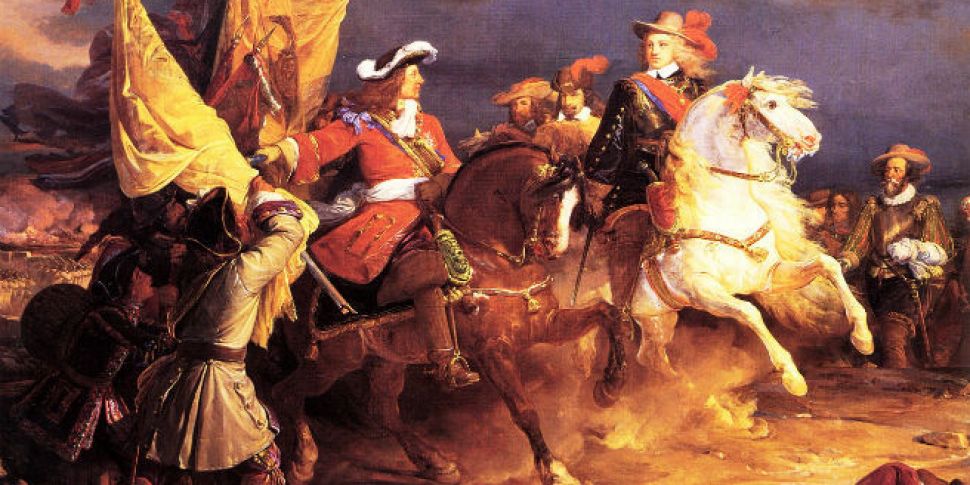The outbreak of the Spanish War of Succession in 1701 was due to many varying political circumstances in Europe. The subsequent Treaty of Utrecht was arguably the most important legislative document in transforming and shaping early modern Europe, and indeed Europe as we know it today.
Spain under the rule of the Habsburgs had been a dominant force, expanding their empire globally to become the ultimate world power. The end of the Habsburg dynasty was marked by the death of the Spanish King Charles II in 1700. So began the scramble for power that led to the War of the Spanish Succession.
The will of Charles II dictated that he should be succeeded by the grandson of his sister, Philip. However, Philip was also a grandson of King Louis XIV of France. It was this issue that European monarchs held contention against. The potential of a combined force of France and Spain under common control was impossible to comprehend. Ultimately, no solution could be found peacefully, so the outbreak of war was inevitable.

Map of Europe in 1700
Louis XIV’s rule was central to 17th century Europe. His was the ultimate example of an absolute monarchy, one that has total control of its state economically, culturally and politically. Under Louis, the power of French military grew at a great pace, as he expanded the borders of France further through the treaties of Westphalia, Pyrenees and Nijmegen.
It was such activity that defined the French in the first half of the Bourbon dynasty, as they usurped Spain as the dominant power of the time. However, in doing so, France created few allies and many enemies. This was sure to lead to problems in the medium to long term.
England remained rather quiet on the international front in the early stages of the 17th century. It wasn’t until the final third of the century that their forays into European conflict began, as they formed a controversial alliance with France during their troubles with the Netherlands.

Portrait of King Louis XIV, portrayed as the god Jupiter
Public sentiment in Britain was firmly with the Protestant Netherlands and against Catholic France. This sentiment reached fever pitch when the Roman Catholic, James II, ascended to the English throne in 1685. It is no major surprise that there was then much support for the protestant William of Orange, Stadtholder of the United Provinces and nephew of James II. He deposed James II in the glorious revolution of 1689, and ruled jointly with his wife Mary, who was also the daughter of James II. It’s clear to see the political landscape of the day was murky at best!
Finally, the Holy Roman Empire was a most complex entity. Within it, there were many different states and powerful regions, such as the increasingly powerful Brandenburg-Prussia, which expanded considerably during the late 17th century. However the centre of power in the empire lay in Hapsburg controlled Austria. This control was central to the sustenance of the empire, as it held close links with the Habsburg branch in Spain, making the issue of Spanish succession of ultimate importance to the Holy Roman Emperor Leopold I.
The conflict defined the early years of the 18th century in Europe. The early fighting resulted in mixed outcomes, with both sides recording both victory and loss. It was a theme that was to define the war, one which nobody really wanted and that nobody seemed willing to win.
Battle of Malplaquet, 1709
Ultimately, the move towards treaty was as inevitable as the occurrence of the war; it was simply a question of when it would happen. Eventually, political instability in many regions in Europe resulted in the move toward peace and treaty negotiations.
Negotiations began in 1711 and by 1712 there was representation from all corners of Europe. Initially, the main provisions agreed upon gave guarantees that the Bourbon dynasty would not rule as one. As the pace quickened, the provisions of the treaty solidified. Philip was forced to renounce his right to the French throne. Then he was allowed to fulfil the will of his granduncle, Charles II, and finally take control of Spain.
However, Philip (now King Philip V) saw his territory divided. The Holy Roman Empire received the Spanish Netherlands, as well as Naples, Sardinia and much of Milan. For Britain, it received Minorca and Gibraltar and, perhaps most importantly, ‘The Asiento’- legislation allowing them to be a major player in slave trade. Ultimately, the Treaty of Utrecht in April 1713 signalled the end of the Spanish War of Succession. There has been much change to European borders since this time, but, arguably, this treaty did more to solidify international boundaries, and belligerence, than any other legislative document to date.
Suggested Reading:
David Sturdy, ‘Fractured Europe 1600-1721’ (2002)
William Maltby, ‘The Rise and Fall of the Spanish Empire’ (2009)
For all other 'Talking History' Book Recommendations, click here









